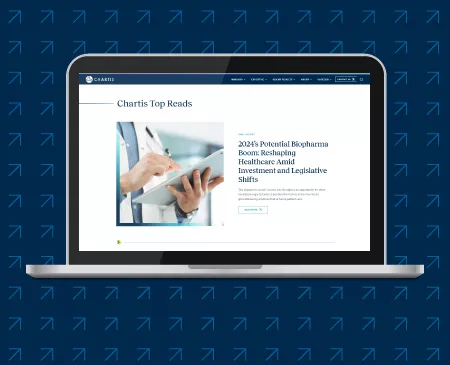SUE ANDERSON:
We recently hosted a roundtable discussion about the increase in regulatory scrutiny we’ve been seeing and how it has impacted the transactions among healthcare providers. First of all, from your perspective, what are the trends we are seeing in terms of the transactions that the FTC is reviewing?
KATHARINE O’CONNOR:
The first trend I would mention is that transactions among healthcare providers in highly concentrated geographic markets, although scrutinized before, are even more scrutinized now. And if you are considering a transaction in a concentrated market of, say, 4 or 5 hospital systems or less, you’re going to have an uphill battle. That doesn’t mean it’s not going to happen. You just have to be careful and strategic about what you’re doing.
The second trend is that when the state and federal antitrust agencies review a transaction, they’re asking questions about the labor market and the effect of a transaction on payers and patients, even when the 2 health systems or providers that are considering merging are in completely different markets or adjacent markets. The FTC Chair Lina M. Khan has made statements recently that every FTC review now will include an analysis of the effect of the deal on labor. And in hospital cases or healthcare transactions, that focus has been on nurse labor and other mid-level practitioners, non-physicians.
But it’s important to note that, even with these trends, the most important factors in my view are still: what the market shares are within a plausible geographic market and what the effect of the deal is on payers. Are payers going to be paying higher rates as a result of the deal?
Recently, we’ve seen a number of FTC challenges of hospital deals, including 2 in New Jersey, one in Philadelphia, one in Georgia, one in Rhode Island, and one in Utah. In all 6, the FTC’s complaint focused on the traditional antitrust analysis of too much concentration within a geographic market—direct competitors in a geographic market merging together.
Despite questions from the FTC and other regulators that explore unique antitrust theories like the effect on labor, the facts alleged in the lawsuits that the FTC is bringing still look very traditional. In all but one of those 6 cases, the party has either lost to the government in court or abandoned the deal after the government filed a lawsuit. The one case that the party has won was in Philadelphia. And there, the judge did not agree with the geographic market because he said that it was excluding competitors, other hospital systems that the parties competed against, and also didn’t believe the credibility of the witnesses, including from major payers.
During all of those 6 transactions, when they are being considered before the FTC staff and voted on at the commission, there were only 4 commissioners, who were split (2 Democrats and 2 Republicans). In May of this year, the third democrat, Alvaro Bedoya, was sworn in, and now the Democrats have a majority at the FTC. With that majority, it is possible that we will see a labor claim or some other unique theory in an upcoming lawsuit.
ANDERSON:
We are also seeing that state AGs have become more active in reviewing proposed transactions. Are there any trends here that you would call out?
O’CONNOR:
What we’ve seen in recent cases is that the states have their own agendas and that parties to any transaction need to be attuned to state politics and how those are impacting hospital deals. In some cases, the state AGs are coordinated with the FTC or the federal regulator. In other cases, they are not coordinated; they’re initiating their own review, and they’re taking their own view of the competitive harm of the deal. The Rhode Island transaction that I mentioned is one of them. There, the state AG eventually sided with the FTC in the lawsuit, but had their own reasons for doing so and their own theories, and also hired their own outside lawyers in that deal. Parties need to respond to both the federal regulators and the state regulators and structure their transactions with both of them in mind.
ANDERSON:
For healthcare executives who are considering, or are in the midst of planning and negotiating a merger, what advice would you offer?
O’CONNOR:
As was cited in the previous roundtable session, I definitely agree that having a pro-competitive impact for any transaction is important and necessary, but it’s not going to win the day necessarily with this FTC. Even community support will not get you through regulatory review if the FTC sees that it’s anticompetitive or sees another way to challenge the transaction.
But what you can gain from developing the pro-competitive narrative here and articulating value of the transaction is employer support, payer support, nurse and other employee support. And the agencies may listen to employers, payers, and nurses. That being said, even union support or nurse support might not be enough, as we’ve seen in recent deals.
As part of the pre-transaction analysis, health systems need to look at their direct contracts with employers and whether the other party to the transaction also has agreements with the same employers to see if they’re competing directly for those same employer contracts. They also need to look at whether they compete for nurses or other mid-level practitioner employees, including an analysis looking at where nurses live and how far they’re traveling to work.
Those considerations are ones that health systems really didn’t have to pay much attention to in their pre-transaction antitrust analysis before, but they do now. Or, at least, I think it’s advisable to do now.
If pre-transaction document creation was important before—it’s always been important—it’s extremely important now. The current FTC will not necessarily take a party’s word for it. They want pre-transaction, ordinary course documents created by the parties that support every point the parties are trying to make and argue about why the deal should go through.
ANDERSON:
If you could impart 3 key takeaways for healthcare executives navigating today’s antitrust environment, what would they be?
O’CONNOR:
First, even more so than before, pre-work on a potential partner and the competitive effects of any transaction is incredibly important. Engage with counsel early to review documents and understand what your own documents say before moving forward.
Second, although the most important thing will be the traditional antitrust analysis and the effect on consolidation within a narrow geographic market, the FTC has said expressly that labor will be an important part of antitrust review, and alternative theories of competitive harm should be considered early on.
Third, expect every transaction in the healthcare space right now to get some additional look from the regulators. Things are going to take longer, and you’re going to have to answer more questions.
ANDERSON:
Thanks so much for joining us today, Kate. It’s always a pleasure working with you and hearing your perspective. Related insights on healthcare partnerships are available on both the MWE website and Chartis website.
© 2023 The Chartis Group, LLC. All rights reserved. This content draws on the research and experience of Chartis consultants and other sources. It is for general information purposes only and should not be used as a substitute for consultation with professional advisors.



